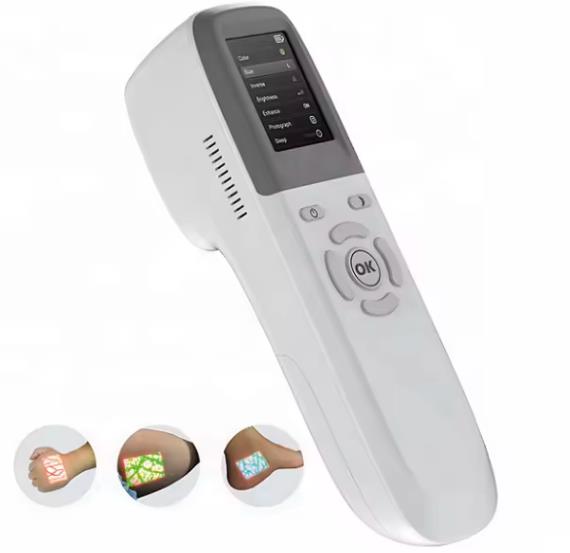cheapest vein finder machine, an instrument for finding blood vessels
Injecting may seem like a simple action, but even for healthcare professionals, it can be a challenging task. Especially when encountering patients who are obese, have small or fragile blood vessels, venous puncture becomes even more difficult.
According to statistics, the failure rate of the first attempt of venous puncture is 10% -20% in adults and 40% in children. 58% of patients are dissatisfied with the level of venous puncture performed by nurses. Improper venipuncture operation not only causes patients to endure the pain of multiple punctures, but also may lead to phlebitis, vascular obstruction, or other complications.
So, is there any way for medical staff to accurately locate subcutaneous veins and improve the success rate of venous puncture? The vein finder is a great helper for medical staff to find veins, and it can assist them in accurately inserting needles!

The Vein finder venous imaging system is a leading mobile vascular imaging system in the market. Through the vein finder machine, doctors can see 15 millimeters of blood vessels beneath the patient's skin, while commonly used blood vessels in clinical practice are generally concentrated at 10 millimeters below the skin. In addition to the surrounding veins and their branches, doctors can also observe the valve of blood vessels and the flow of blood, as well as the flow of drugs in the blood vessels.
If the patient has phlebitis or varicose veins, the internal thrombus can be clearly seen through the vein finder machine. Moreover, the second-generation product Vein finder machine's vascular lamp can also change color, allowing doctors to easily change image size and brightness
The working principle of the vein finder machine venous imaging device is to utilize the different absorption of near-infrared light by deoxyhemoglobin in surrounding tissues and veins, convert the information through photoelectric conversion and image processing, and then project it in real-time onto the patient's skin.
Through this approach, the success rate of the first venous puncture by medical staff can be significantly improved, the puncture time can be shortened, thereby reducing the trauma and pain of patients, lowering their risk of infection, enabling patients to receive medication or liquid treatment more quickly, and winning rescue time.



Post a Comment